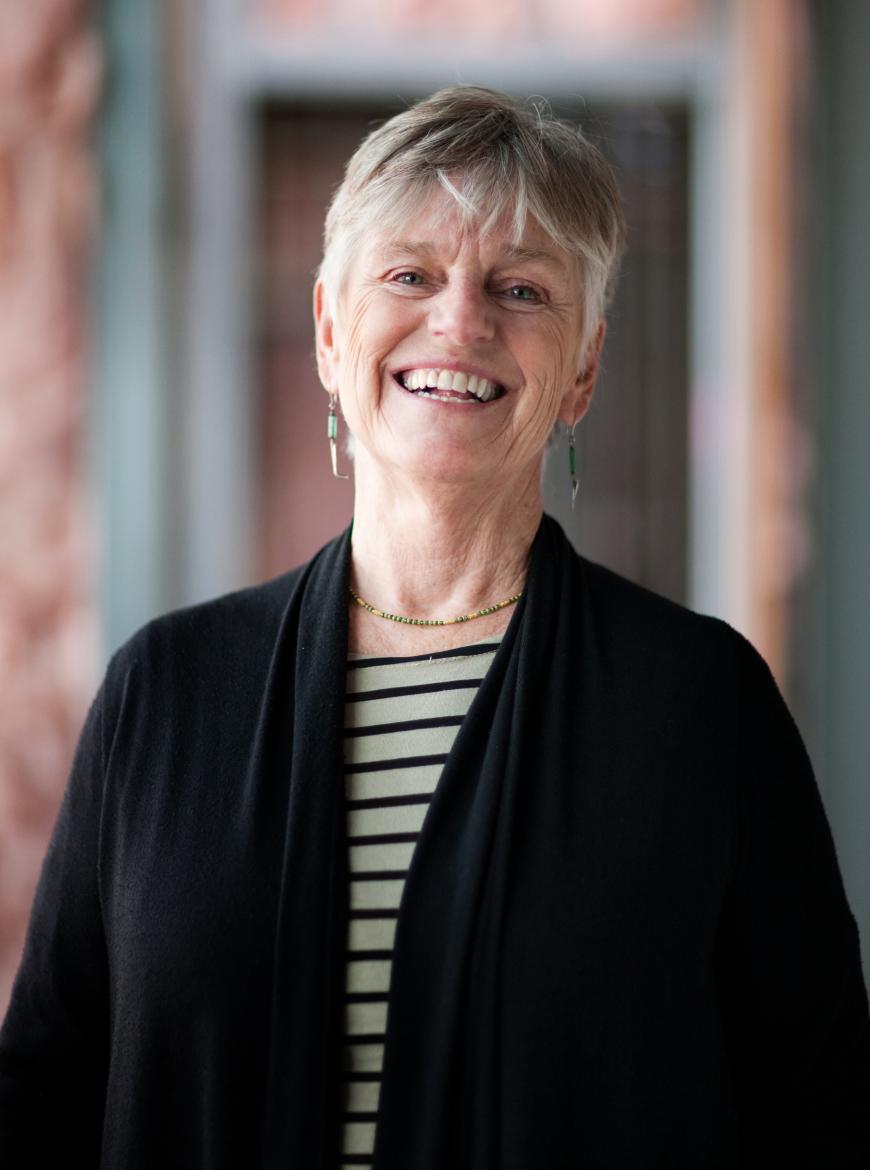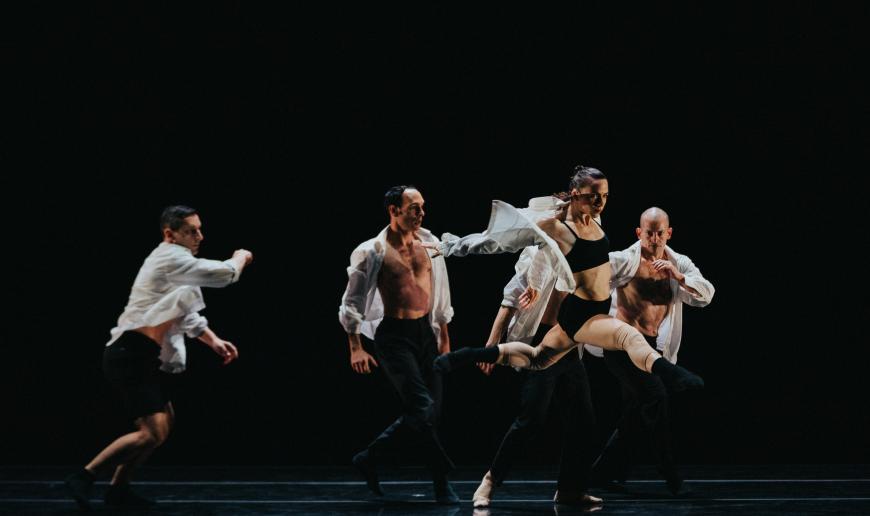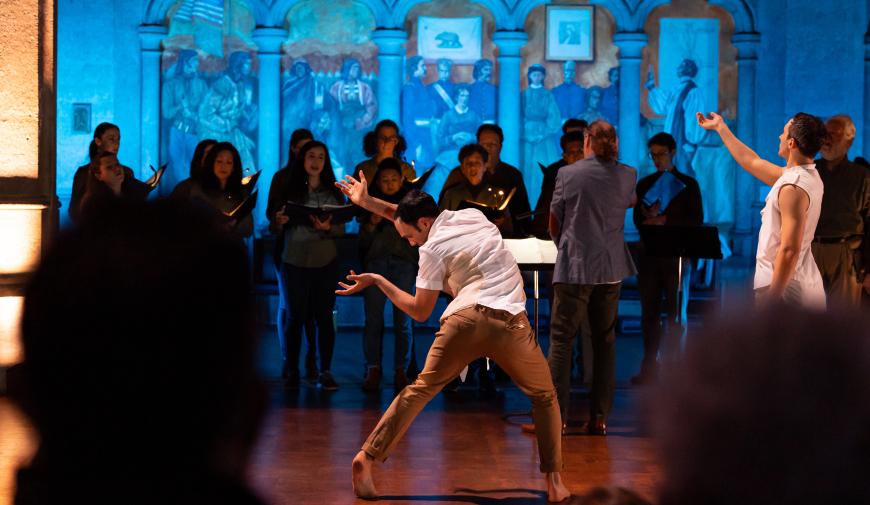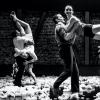
ODC’s founder and artistic director, Brenda Way, who will be inducted into the California Hall of Fame next month, has spent half a century pioneering in modern dance, having raised generations of dancers and choreographers by now.
ODC is such a generally used acronym, especially in San Francisco, that its origin may be lost for some. Way founded the Oberlin Dance Collective in 1971, when on the faculty of Ohio’s Oberlin College. In 1976, on sabbatical — “whoops, never returned” — she packed her yellow school bus with a dozen artists and her three daughters and arrived in San Francisco to stay.
By now, ODC’s programs involve more than 16,000 artists and students and reach over 50,000 audience members annually. The premier artistic arm of the organization, ODC/Dance, is noted for its fusion of classical and modern techniques and for its collaborations, including with writers Leslie Scalapino and Rinde Eckert; actors Bill Irwin, Geoff Hoyle, and Robin Williams; and visual artists Wayne Thiebaud, John Woodall, and Eleanor Coppola.

Way told SF Classical Voice about the Hall of Fame honor:
I feel most pleased that someone in contemporary dance was deemed important enough for inclusion! Of course, everything I’ve managed to build has been with the ongoing and deeply critical participation of colleagues, friends, family, and institutions … the collective.
I was never a careful long-range-plan kind of person as much as an optimistic opportunist. You don’t get what you don’t reach for. In addition to an open environment, there was so much energy to ride when I arrived [in San Francisco], critics writing, dancers dancing, art forms tripping over each other, all available at accessible prices.
But probably some evictions and equivocal, or worse, artistic reviews had a felicitous role in toughening me up for the long haul … while, of course, the good ones buoyed me.
I had a sign up in my office at Oberlin when I was gainfully employed that said, ‘We’re all going down in the end, let it be in flames’ — by which, of course, I meant, ‘Take chances.’ So that may be a key.
It was easier to do so in those earlier days, though, so I had the advantage of historical timing — no small thing. All in all, the West [Coast] was definitely the right place for me. Pluralistic and diverse, and the philanthropic community was as willing to take chances as we were, and now we need to be there for the next generation.”
Way is indeed the only “someone in contemporary dance” included in the 2024 honors. The rest of this year’s inductees:
Master chef Helene An, former S.F. Mayor Willie L. Brown Jr., computer scientist Vinton G. Cerf, storyteller and filmmaker Ava Duvernay, pop-punk band The Go-Go’s, federal judge Thelton E. Henderson, Chicano rock band Los Lobos, basketball player and broadcaster Cheryl Miller, and former U.S. Secretary of Defense Leon E. Panetta.

Through her choreography and leadership of ODC, Way has impacted the lives of thousands, inspiring audiences, cultivating artists, engaging community, and fostering diversity and inclusion through dance. Under Way, ODC became the first modern dance company in the United States to own its home facility. Today the organization comprises three buildings that house eight dance studios of varying size, a state-of-the-art theater, a gallery, a cafe, and a media lab, as well as a health clinic, administrative offices, and a “town hall.”
Among the dozens of pieces Way has choreographed are Invisible Cities (1985), Tamina (1986), This Point in Time (1987, for Oakland Ballet), Krazy Kat (1990, for San Francisco Ballet), Ghosts of an Old Ceremony (1991), Western Women (1993), Scissors Paper Stone (1994), Investigating Grace (1999, named an American masterpiece by the National Endowment for the Arts), Remnants of Song (2002), On a Train Heading South (2005), Equal Justice Society; Life Is a House (2008), Unintended Consequences: A Meditation (2008), and Collision, Collapse and a Coda (2023).
Way’s many recognitions include a unique residency with the American Academy in Rome, through which, as the only dancer/choreographer in the program, she was assigned to act as a senior advisor to Rome Prize winners, including composer Kurt Rohde.

Way described the Rome residency:
My obligation was to eat well, enjoy Rome, and engage with the life of the Academy, which included lectures, walks, showings, trips around Italy, and impassioned discussions of the work taking place in the many rooms of the villa.
The Academy housed me in a tower apartment in the Villa Aurelia on top of Janiculum Hill, [operations center] in 1849 for [general Giuseppe] Garibaldi as he fought to organize Italy into one unified country. I could see the three arches of the [Roman] Forum out of one window, the Michelangelo facade of what is currently a power station out of another, and the park of the Doria Pamphilj and the splendid gardens of the Villa Aurelia out of two others.
Perfectly shaped trees and carved hedge arbors and lemon trees in little square patches of green grass, like a checkerboard from Alice in Wonderland. I am always responsive to grids.
Art critic Rosalind Krauss once argued for the anti-natural implication and reductive impact of grids in the contemporary visual arts. She described the obsession as a limiting trend, but I saw and loved them everywhere [in Rome], in the Renaissance walls, the cathedral floors, the mosaics, in the paving stones of the cobbled streets, in the gardens, and I realize I am part of an old sensibility indeed.”




